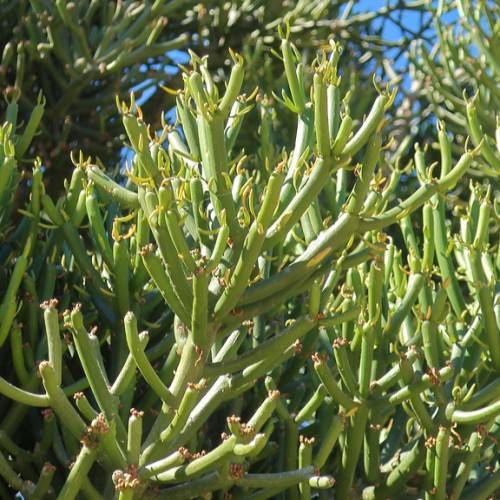
Indian tree spurge
Euphorbia tirucalli
Cycle:
Perennial
Watering:
Minimum
Hardiness Zone:
11 - 12
Flowers:
Flowers
Sun:
Full sun
Growth Rate:
High
Maintenance:
Low
Poisonous To Humans:
Yes
Poisonous To Pets:
Yes
Drought Tolerant:
Yes
Salt Tolerant:
Yes
Thorny:
Yes
Invasive:
Yes
Care Level:
Medium
watering
Indian tree spurge, also known as stick euphorbia, should be watered moderately throughout the growing season. In the warmer months, the plant should receive about 1 inch of water per week. During the cooler months, this should be reduced to about ½ inch of water every 2 weeks. When watering Indian tree spurge, avoid overwatering as excessive moisture can cause root rot. When in doubt, opt for less water as it prefers dry soil conditions.
sunlight
Indian Tree Spurge (Euphorbia tirucalli) needs full sunlight for optimal growth. This plant should get between 6-8 hours of sunlight per day, although it can tolerate up to 12 hours of sunlight in a day. It is important to note that this species does not do well in hot, humid climates, and should be protected from the full afternoon sun to help decrease its chances of wilting or dying from the heat.
pruning
Indian tree spurge (Euphorbia tirucalli) should be pruned twice per year, once in the spring and once in the fall. In the spring, prune the tree spurge by removing dead branches and twigs and cutting back any damaged or crossed branches. In the fall, prune the tree spurge again to encourage dense, bushy growth. When pruning, prune gently, taking off no more than 1/3 of the root mass at 1 time, and make sure to clean up and dispose of all trimmings. Pruning Indian tree spurge helps maintain its shape and size, and increases flowering and overall health of the plant.
